The Forestville Dock in Forestville, Michigan, was a vital structure during the late 19th and early 20th centuries that served as the economic lifeline for this small Lake Huron village. Located in Sanilac County, Forestville once thrived as a lumber town, like many other coastal communities in Michigan’s Thumb region. These real photo postcards capture a time when timber, commerce, and transportation converged on one of the most prominent docks along Lake Huron’s western shore.
Very little is currently available online on this huge Forestville dock. So, we turned to some genealogical information to fill in the blanks. This is an excerpt from Forestville Mi Bicentennial History.
Forestville Historical Background
Founded in 1854, Forestville was named for its dense surrounding woods and quickly grew around the lumber industry. The village became a hub for shipping timber and agricultural goods, especially after a large sawmill was built in the area. To support shipping operations, the Forestville Dock was constructed—an engineering feat for the time, stretching hundreds of feet into Lake Huron to accommodate lake freighters and passenger steamers.
The dock allowed schooners and steamships to bypass the shallow shoreline and access deeper waters for loading and unloading cargo. At its peak, the dock was critical to moving logs, lumber, salt, and other materials from the Thumb’s interior to larger markets like Detroit and Cleveland.
Forestville’s Huge Docks
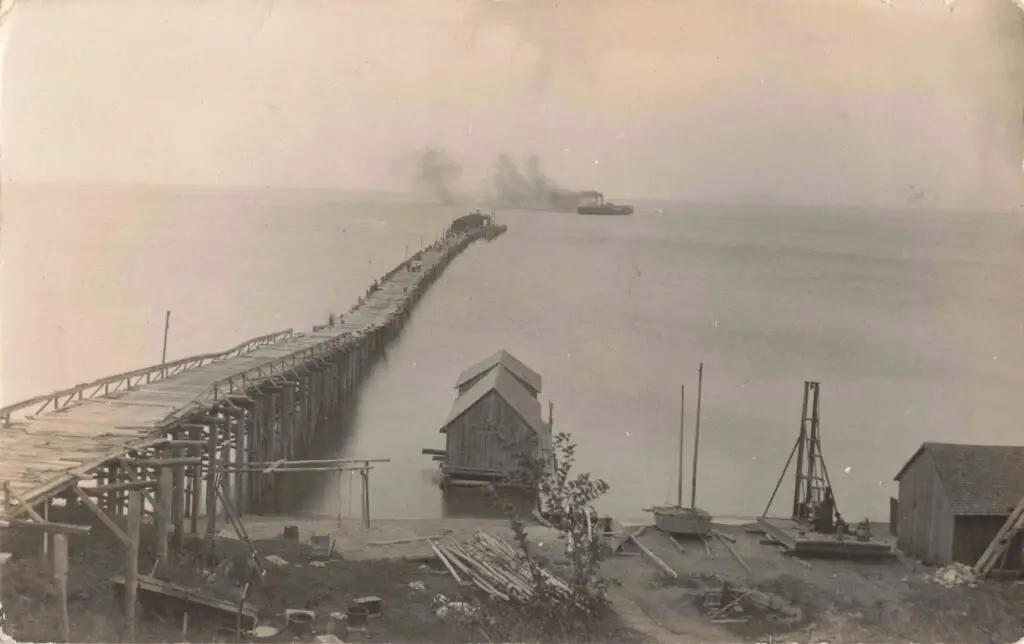
The docks, or landings, built to handle lake shipping were maintained at a continual expense, but dockage, nonetheless, made a land-office business in the old days. The original Forestville docks were made of logs and cribs filled with stones, piling supporting the warehouse end of the pier. Their approaches were made down on the beach terrace, and neither of the docks ran straight out into the lake but stood at about a 15-degree angle from due east.
The number of docks destroyed by storm and ice is too many to enumerate, although both significant docks sustained severe damage in 1859, 1876, and again in 1883, when the north (or Green) pier lost one crib and a 50-foot portion of piling. The winter gales swept away the majority of both docks in 1885, and only the north dock was entirely rebuilt.
At the time of the 1871 fire, the “Ward” dock was being run by Jake Buel, the local lumber king. Jake and Eber B. Ward rebuilt the dock after the fire and operated it until about 1877.*
The Docks Were An Economic Hub
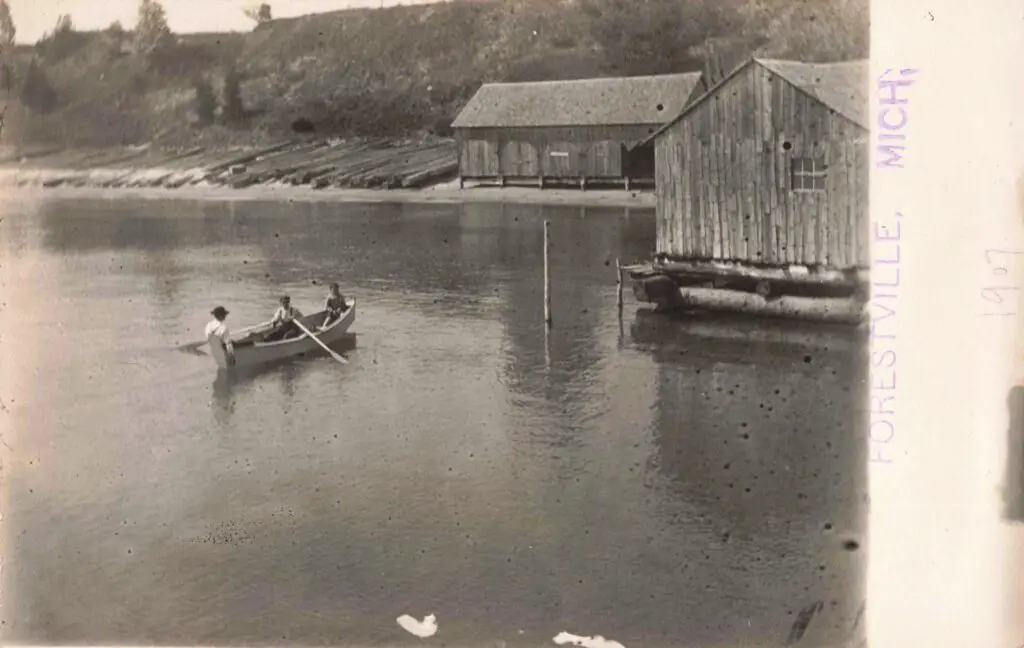
In 1878, it was reported that bulk shipments from the Ward dock were infrequent. 11,000 sacks of wheat, 3,000,000 shingles, 70,000 feet of timber, 11,500 cedar posts, and 1200 cords of fuel were among them.
Frank Buchkowki, who lumbered the west township, was a frequent visitor to the Ward dock. He shipped a quarter-million feet of lumber and 100,000 shingles in a single season.
In 1880, a new item revealed that Tom Ward of Charleston had a massive amount of lumber swept off Ward pier after a major storm.
Freight pilfering was a constant annoyance, especially when the young guys learned that beer or wine shipments were on their way.
In 1878, criminals attacked a Ward Dock warehouse and stole a large quantity of Tenant’s yard goods cargo. However, they also seized “a half-barrel of beer, 100 pounds of peanuts, and a case of cigars… Maybe for a successful celebration.
Docks were a Community Gathering Spot
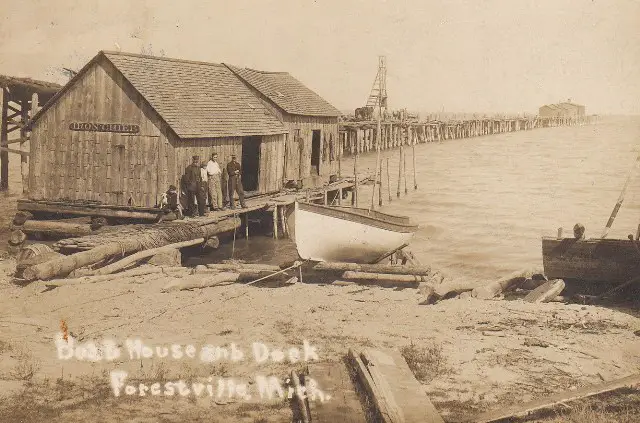
The docks became the economic centers of the shore towns, but they were also a social center as well. In small communities, ” going down to meet the boat” was a welcome adventure. The old docks were never equipped with railings and it is a wonder that more people didn’t fall into the lake. A few did, some of them drunk, and one fellow, rubbernecking at the ladies along the boat rail, rode his bicycle right off the dock end. Tom Potts, the drayman, once back his team off the docks. He unhooked them, and they swam ashore.
The old dock afforded a fishing pier for the whole community. As far as I can remember, only worms were ever used for bait. The old-timers that I remember sometimes treated them more effective minnows, but we did sometimes resort to gaffs “or grab hooks to snag big perch when the water was clear, and they ignored our worms. Fishing from rowboat was unnecessary while the long docks stood.
According to local legend, there was just one deadly accident. It happened in 1885 when William Merckel took his five-year-old son out on the Corrin docks to observe the enormous seas that were raging that day. A massive wave slammed into the docks, carrying the child overboard. Mr. Merckel swam around seeking for him until he was weary and had to be dragged in with a line and buoy.*
Features of the Dock
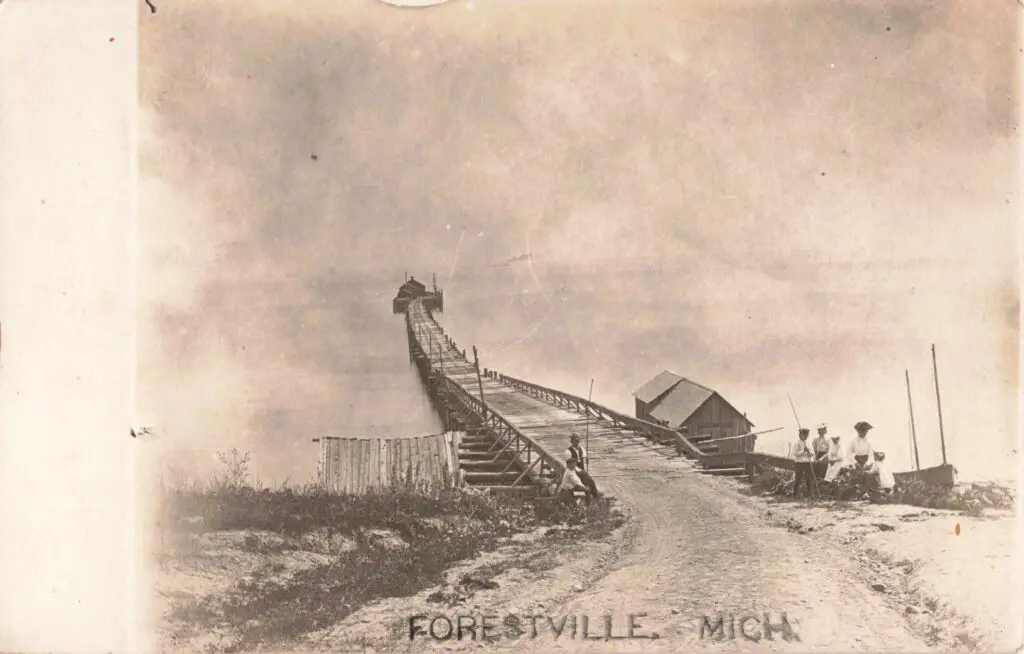
The dock, as shown in your postcards, was built of heavy timber and extended far into the lake. It included:
- A long elevated trestle that allowed wagons and later trucks to carry materials out to ships.
- Boat houses and tool sheds for fishing and docking operations.
- Steam-powered derricks or winches, visible in one of your images, likely used for lifting goods or operating pile drivers for maintenance.
- Passenger access, as steamers carried not only freight but also tourists and residents between port towns along Lake Huron.
Decline of the Lumber Industry
By the 1920s, Forestville—like many small port towns—declined as the lumber industry moved westward and railroad networks took over freight transport. The dock gradually fell into disrepair, and many of the businesses that depended on it disappeared. Storm damage from events such as the 1913 “White Hurricane” and ice flows in winter also contributed to its deterioration.
The Mastin Fishery Era – 1930s
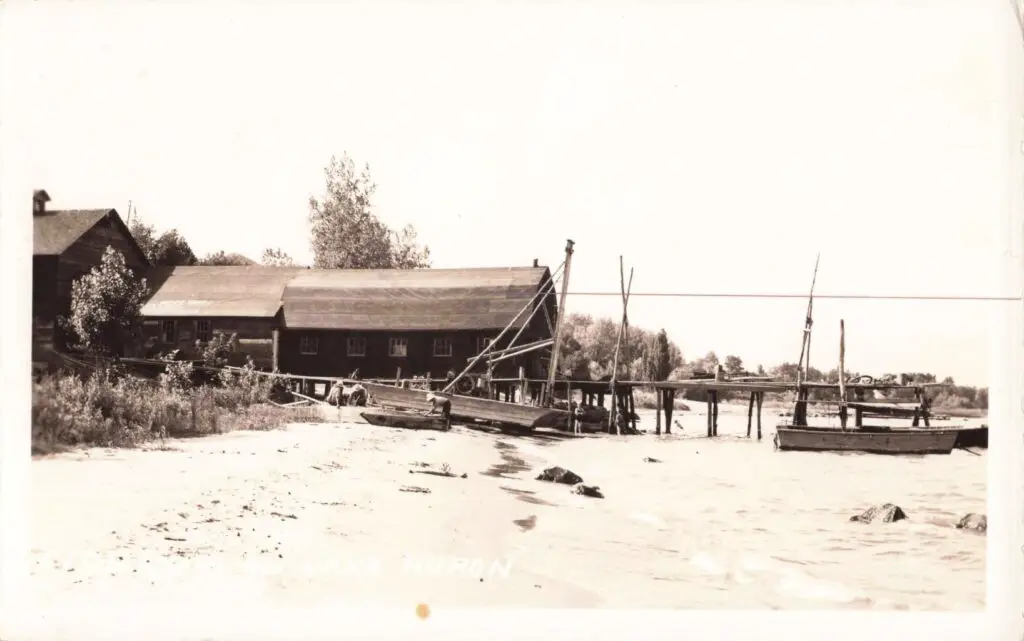
However, during the early to mid-20th century, Forestville was home to a small-scale commercial fishery, known as the Mastin Fishery. These operations were integral to the local economy, with a primary focus on harvesting species such as lake trout, whitefish, and perch.
The 1930s marked a period of significant change for the Great Lakes fisheries. Notably, the invasive sea lamprey began to infiltrate Lake Huron around 1937, leading to a sharp decline in native fish populations, particularly lake trout. This ecological disruption had profound effects on commercial fishing activities in communities like Forestville.
Forestville Today
Forestville remains an incorporated village with a population of fewer than 200 residents. It is a quiet lakeside community with a marina and campground, preserving its connection to Lake Huron but far removed from its bustling industrial past. The original dock no longer exists, but historic images like the ones you’ve collected are vital visual records of its role in Michigan’s maritime economy.
- *Excerpted from the Forrestville Bicentennial History
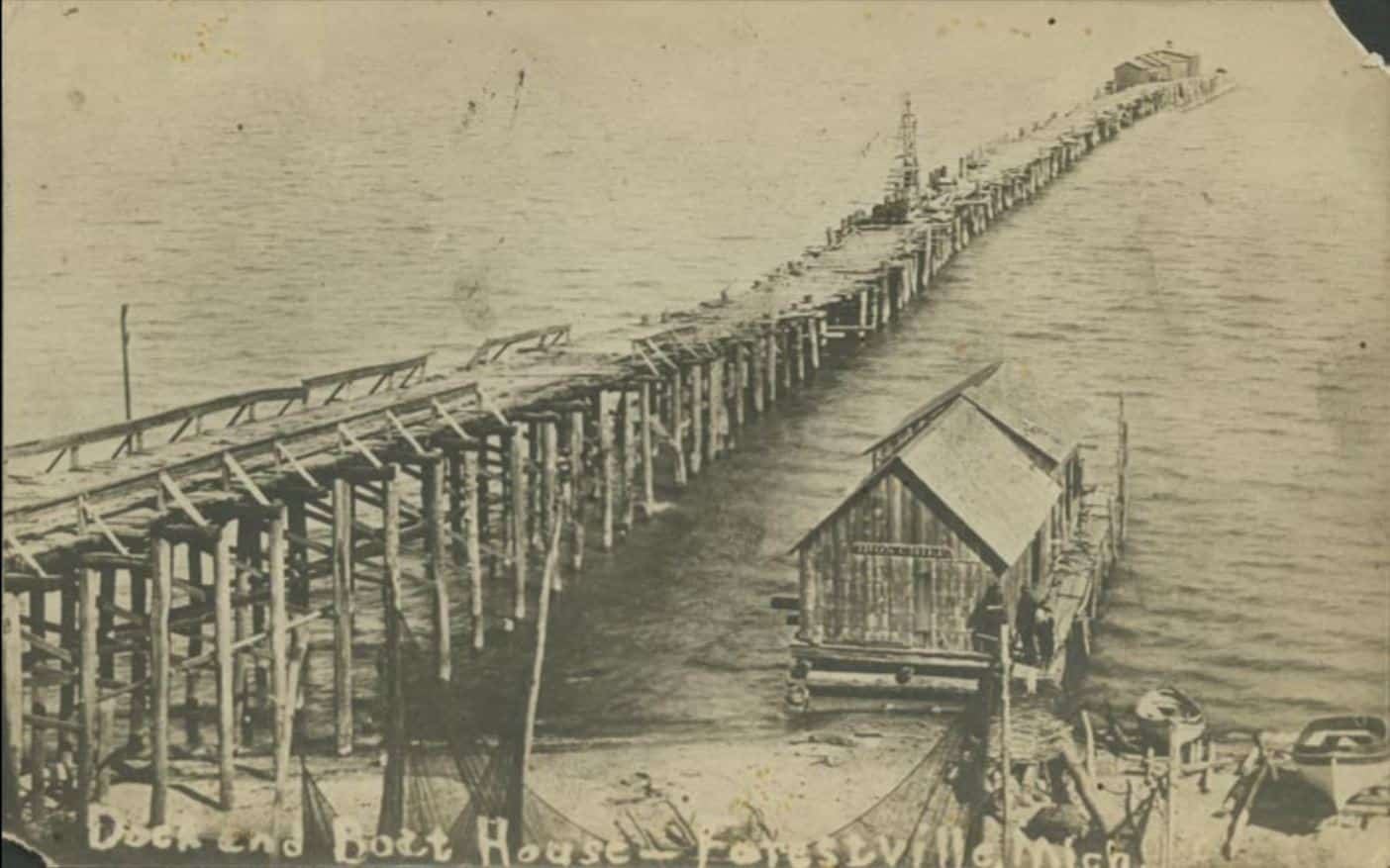


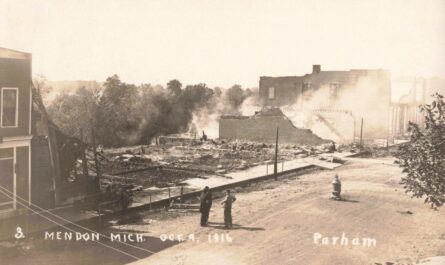
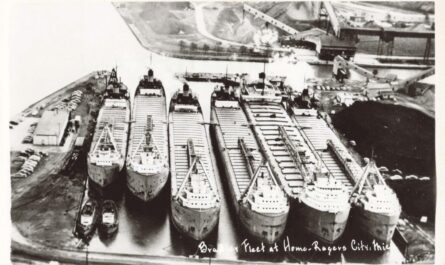
My grandfather Ed BEZEMEK told stories of how you had to have a good team of horses that get back a load of grain all the way out to the ship he said it was supposed to be room to turn around but it was normally full of products